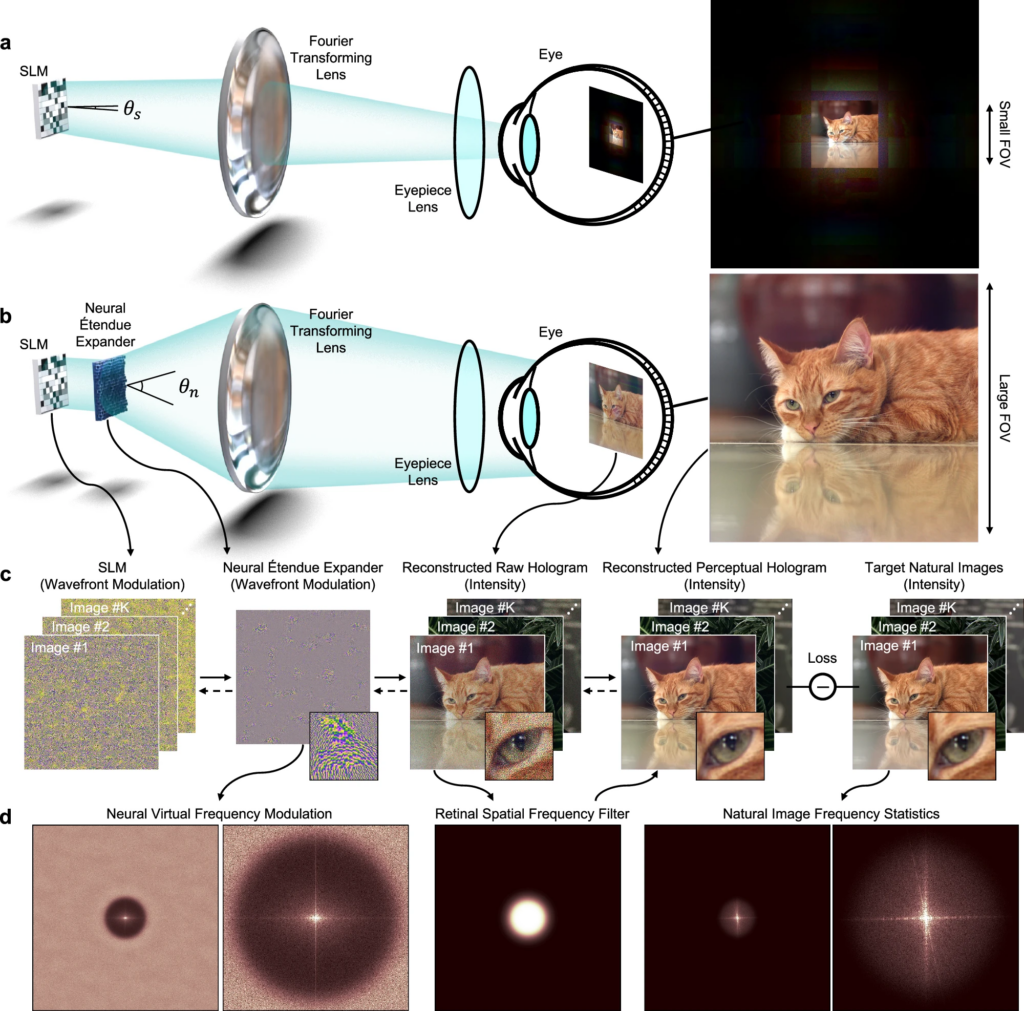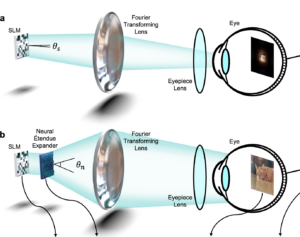Holographic displays, with their ability to create lifelike three-dimensional images, have long been heralded as the future of virtual and augmented reality. Central to their operation are spatial light modulators (SLMs), which dynamically manipulate the wavefront of coherent light to form images. However, these devices face a significant challenge: limited étendue. Étendue, a term from optics, refers to the product of the display area and the maximum solid angle of the diffracted light. It measures the ability of a display to project light over a wide field of view (FOV) without sacrificing image quality. Existing SLMs struggle with small diffraction angles due to technological constraints, resulting in a trade-off between display size and FOV, a compromise that has stifled the full potential of holographic displays.

In a study published in Nature Communications, researchers from Princeton University, Meta’s Reality Labs, POSTECH, and KAUST introduce neural étendue expanders, a novel class of optical elements designed to significantly enhance the étendue of holographic displays. These expanders, optimized using a neural network trained on a dataset of natural images, achieve unprecedented improvements in both the FOV and image fidelity of holographic displays.
The neural étendue expanders work by placing a static optical element with a smaller pixel pitch in front of the SLM, which increases the maximum diffraction angle and, consequently, the étendue. Unlike previous methods that used randomized scattering elements agnostic to the optical setup, these neural expanders are finely tuned to the specific properties of natural images, ensuring high-fidelity reproduction.
The researchers’ experimental setup validated the theoretical advantages of neural étendue expanders. By integrating these expanders into a holographic display prototype with a 1K-pixel SLM, they achieved a 64-fold increase in étendue. This expanded the FOV by an order of magnitude both horizontally and vertically, with a remarkable PSNR of over 29 dB, indicating high-fidelity reconstruction. The captured holograms showcased vivid, high-contrast images free from chromatic aberrations, outperforming conventional binary and uniform random expanders.
The neural étendue expanders seem to have demonstrated robustness to eye pupil movements, a critical factor for user comfort in near-eye displays. The technology’s scalability was also confirmed, as the fidelity improvements persisted across different resolutions, indicating its potential for use in higher-resolution SLMs.
The study’s findings open up exciting possibilities for future research. Integrating neural étendue expanders with emerging optical technologies, such as metasurfaces, could further push the boundaries of what holographic displays can achieve.
Reference
Tseng, E., Kuo, G., Baek, SH. et al. Neural étendue expander for ultra-wide-angle high-fidelity holographic display. Nat Commun 15, 2907 (2024). https://doi.org/10.1038/s41467-024-46915-3

